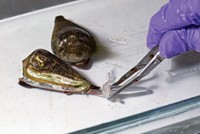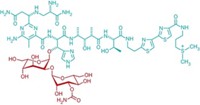Advertisement
Grab your lab coat. Let's get started
Welcome!
Welcome!
Create an account below to get 6 C&EN articles per month, receive newsletters and more - all free.
It seems this is your first time logging in online. Please enter the following information to continue.
As an ACS member you automatically get access to this site. All we need is few more details to create your reading experience.
Not you? Sign in with a different account.
Not you? Sign in with a different account.
ERROR 1
ERROR 1
ERROR 2
ERROR 2
ERROR 2
ERROR 2
ERROR 2
Password and Confirm password must match.
If you have an ACS member number, please enter it here so we can link this account to your membership. (optional)
ERROR 2
ACS values your privacy. By submitting your information, you are gaining access to C&EN and subscribing to our weekly newsletter. We use the information you provide to make your reading experience better, and we will never sell your data to third party members.
Biological Chemistry
Venom defense
July 31, 2006
| A version of this story appeared in
Volume 84, Issue 31
An unexpected new role hasbeen identified for the immune system's mast cells: They provide protection from snake and honeybee venom (Science 2006, 313, 526). Stanford University pathology professor Stephen J. Galli and colleagues uncovered this behavior when they injected mice with venom. Conventional wisdom suggested that the venom would lead mast cells in the mice to release compounds that cause inflammation, clotting abnormalities, and shock, all of which contribute to tissue injury and death. As a result, mice deficient in mast cells should be more resistant to venom than normal mice. Instead, the researchers found that the deficient mice were much more vulnerable to venom. The researchers discovered that mast cells in mice respond to venom by pumping out carboxypeptidase A and possibly other proteases. These enzymes then break down sarafotoxins and other dangerous substances in the venom. If human mast cells act in a similar manner, the work could lead to improved antivenoms.





Join the conversation
Contact the reporter
Submit a Letter to the Editor for publication
Engage with us on Twitter